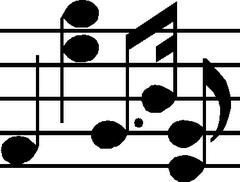
The Canadian Forces Reserves
Members of the Reserves are Military personnel. They train hard to be able to work alongside members of the Regular Force. They develop the skills that enable them to make a meaningful contribution to the team. It's tough and it requires commitment. Expectations are high. Army Reserve members are part of a team where they must depend on each other. They all have to perform their duties, no matter the weather, the time of day or night. On weekends they participate in field exercises, aimed at honing their skills. They need to be sharp if, at some point, they volunteer for a UN tour. Militia members regularly serve on UN missions working beside Regular Force soldiers. They have to be competent at their job. They are the Army.
The following article was brought to my attention. I can't begin to tell you how I feel. These are soldiers who have dedicated their time and themselves, working at jobs or going to school and yet making a commitment to the military. On Tuesday, Christie Blatchford wrote on the current budget-cuts of the Reserve Force and the attempt to slash 5,000 full-time reserve jobs. Some soldiers have already been cut back from working 4 times a month+ to one 3 hour evening. Let me know how you feel.
ONLY THING CANADA'S RESERVISTS NEED CUT IS SOME SLACK
Even in the wake of recent deaths, budgets to train and recruit our part-time soldiers are being slashed .
CHRISTIE BLATCHFORD
From Tuesday's Globe and Mail
January 18, 2010 at 7:32 PM EST
Sergeant George Miok, Sergeant Kirk Taylor and Corporal Zachery McCormack – three of the young soldiers who were killed, along with Private Garrett Chidley and Canadian journalist Michelle Lang, in a massive roadside bomb late last year – have all been laid to rest. What these three had in common, which has received remarkably little notice – they were all reservists, or part-time soldiers. Sgt. Miok, who was also a teacher, was a member of 41 Combat Engineer Regiment, a reserve unit based in Edmonton; Sgt. Taylor's home unit was the 84 Independent Field Battery in Yarmouth, N.S., and Corp. McCormack was an “Eddie,” a member of the Loyal Edmonton Regiment, a storied infantry unit.
I didn't know any of them but experience tells me they would have been as fiercely proud of their real units as Pte. Chidley was of being a member of the 2nd Battalion, Princess Patricia's Canadian Light Infantry.
In Afghanistan, reservists are usually attached as individuals to the battle group, and when they are killed overseas, their reserve identities are usually subsumed by the larger regiment – officially referred to, if at all, only obliquely, as in, “based in Yarmouth” or “from Edmonton.”
Yet throughout Canada's involvement in Afghanistan, reservists have been there.
They have given lives and limbs, just as the regulars have. Every roto to
Kandahar has had at least 300 reservists (out of a total of about 2,500 soldiers) and some as many as 500-plus. They do the same jobs and take the same risks as their full-time counterparts and, once deployed, are also paid the same and receive the same benefits. Some of them have to take unpaid leave from civilian jobs, or put promising careers on the shelf, for the privilege of going.
Yet traditionally, when budget push comes to shove, the reserves take a harder hit than the regular force – chiefly because, where in the regular force wages come from a separate envelope of funds, in the militia it's all of a single piece, so when you cut reserve dollars you're cutting training, bullets, travel, pay and people. Thus, what purports to be suffering dispersed equally in fact isn't.
It's happening again, and was even as those three young men were buried this month. According to what Brigadier-General John Collin, the commander of Joint Task Force Central Area (it means Ontario), has been saying at town hall meetings across the province, the army is looking to chop 5,000 reservists. The cuts are completely at odds with the government's stated position that both the regular army and the reserves are to grow as part of the Canada First defence strategy, and raise the question: If Ottawa has been giving the army the money to grow, what the heck has the army been doing with it?
The key cuts are being made to what are called “Class B” contracts, those reservists who hold full-time jobs, many in training positions.
As Lieutenant-Colonel (retired) Blair McGregor told me recently in a furious note, “reserve units are being stripped of the full-time support staff that is so desperately needed to train the part-time soldiers we rely on.” Lt.-Col. McGregor was until 2008 the Commanding Officer of the Seaforth Highlanders in Vancouver, home unit of Captain Trevor Greene, who was axed in the head and nearly killed while serving in Afghanistan in 2006.
But the cuts aren't stopping there, and they appear to be deeper than first quietly announced in November. According to Lt.-Col. McGregor, John Selkirk of Reserves 2000 (a group formed
to fight for the militia) and others contacted by The Globe and Mail, contracts for Afghanistan-deploying reservists have been cut by a month, reservists who have put civilian lives on hold are having theirs cancelled at the last minute and training budgets are being slashed, with training in some units cut to a half-night a week.
The cuts are also being applied to recruiting, with the next recruit classes in some units cut by more than half. As Mr. Selkirk, the former honorary colonel of the Brockville Rifles, says, “That's the difference between growing and probably shrinking.” And reserve units, once shrunk, are then vulnerable to government pressure to amalgamate with other units.
“I haven't seen it this bad since the late 1980s, '90s,” says one noncommissioned officer at an Ontario reserve unit; this, remember, was the period that former chief of the defence staff Rick Hillier described as “the decade of darkness.”
As Lt.-Col. McGregor says, “The militia regiments that have stood the test of time … are being threatened with starvation in order to make ends meet. Without a force generator like the reserve regiments, our Canadian Forces will be very hard-pressed to make the contribution that is required.…we know from the historic record that there is always another emergency around the corner.” (He wrote that before the earthquake flattened Haiti, a country with which
Canada has strong ties. If the army wasn't overstretched before, it will be now.)
The truth is that the reserves and its citizen soldiers have always been unappreciated by the bureaucracy at the Department of National Defence and sometimes by government. To Lt.-Col. McGregor, the reserves should function for the regular army as the junior leagues do for the National Hockey League. Yet Canada is one of the few countries in the world where the army reserves are smaller than the regular army. This makes no sense, he says. “There should likely be a 2:1 or 3:1 reserves to regular force ratio. “A further truth about the reserve army is that you can't rip it apart and then easily or quickly rebuild it later when you need it. As in the hockey analogy, each hockey team in any league has a first, second and third line and each team has
leadership in the form of a coach, manager, captain and several assistant captains.
“And soldiers,” he says, “like to belong to cohesive and proud organizations and in Canada these are called regiments. They are the ‘teams' on which soldiers exist.” In the national game, anyone who doesn't perform is swiftly fired.
Canada's soldiers, reservists included, have performed beyond expectations. Would that the same could be said of those who make these maddening and shabby decisions.





















